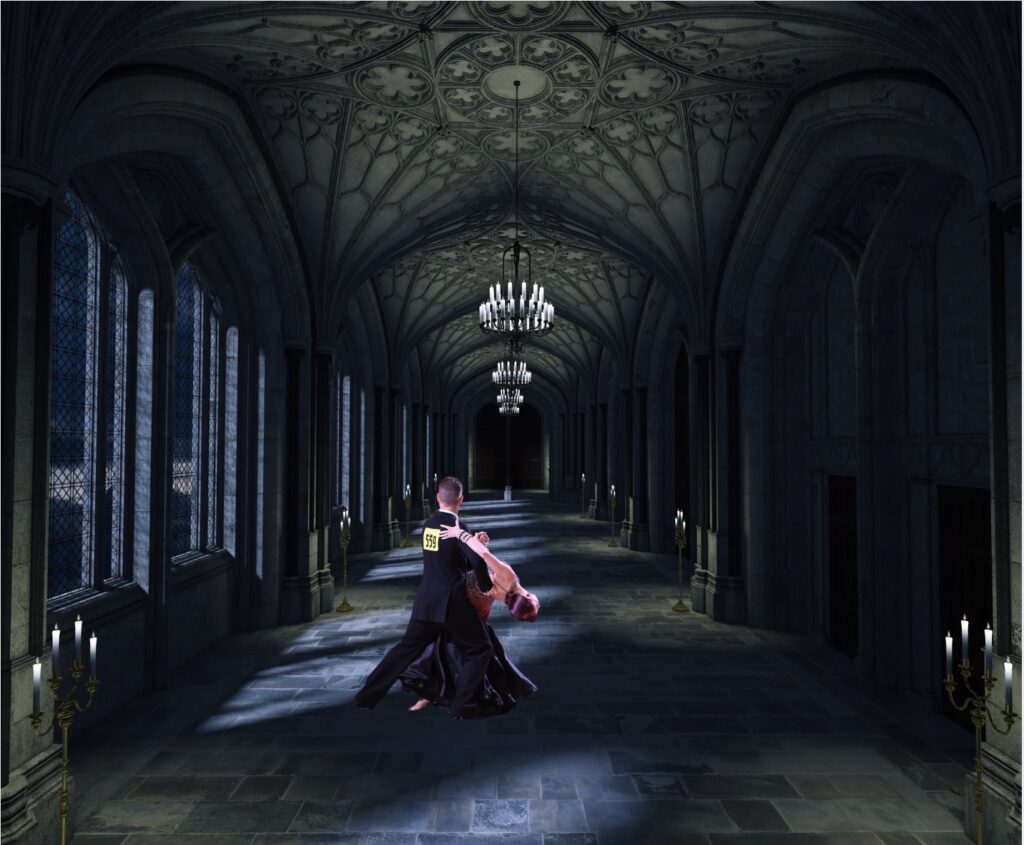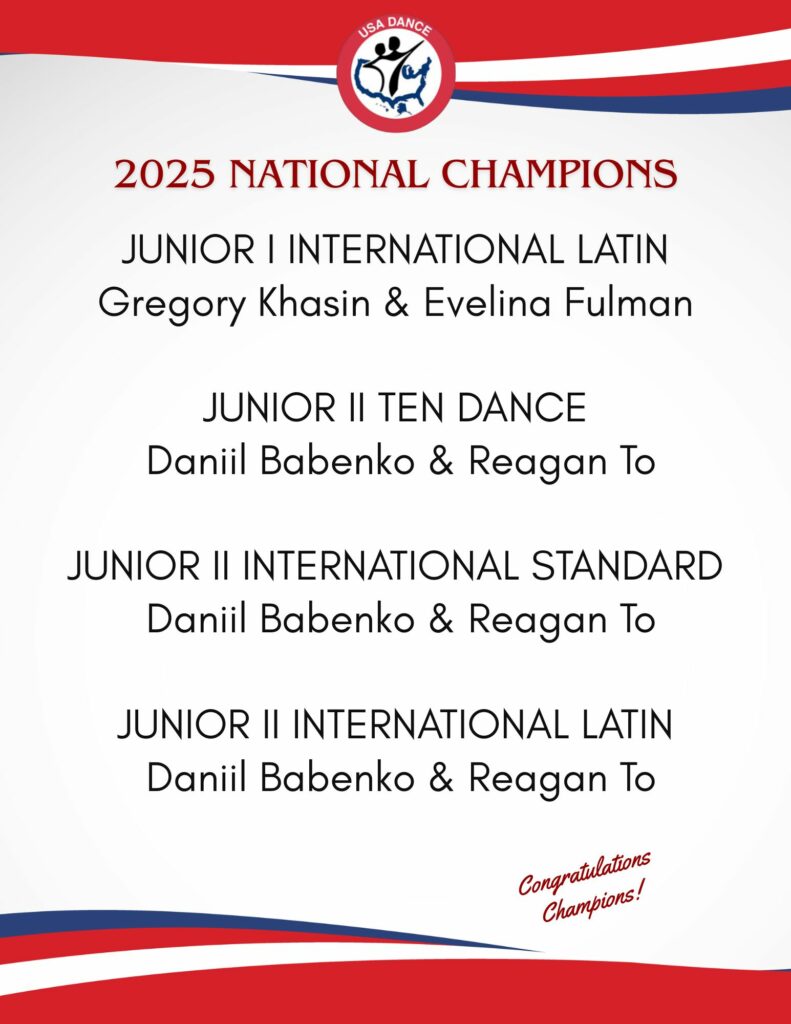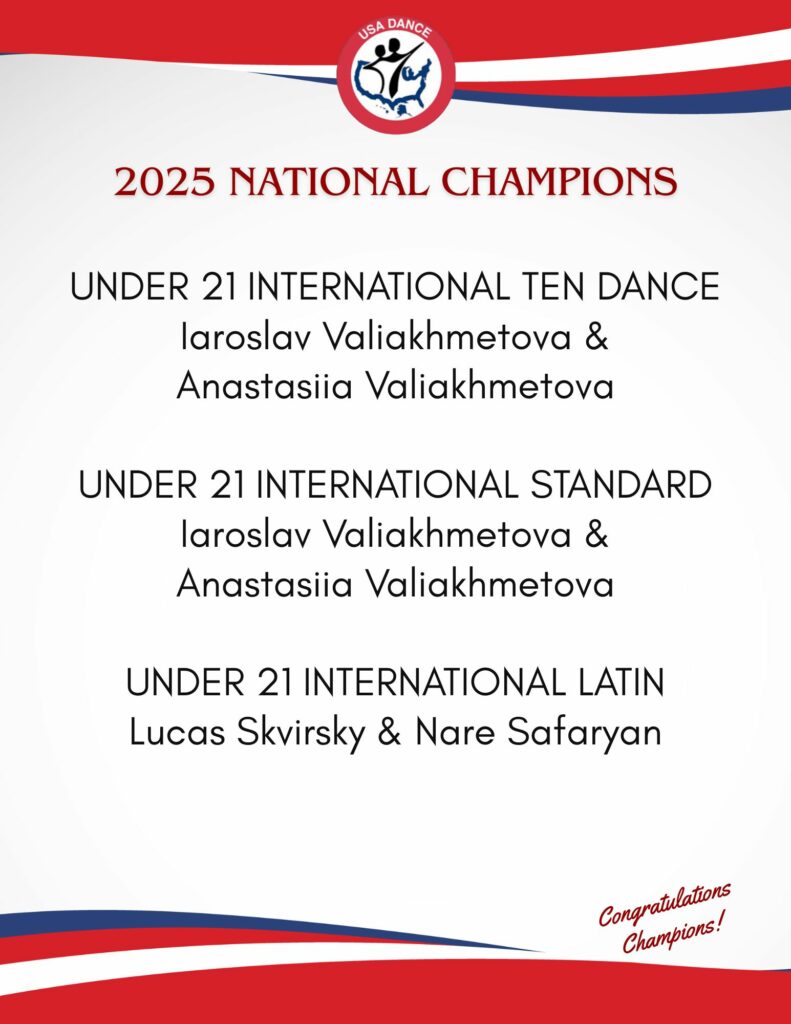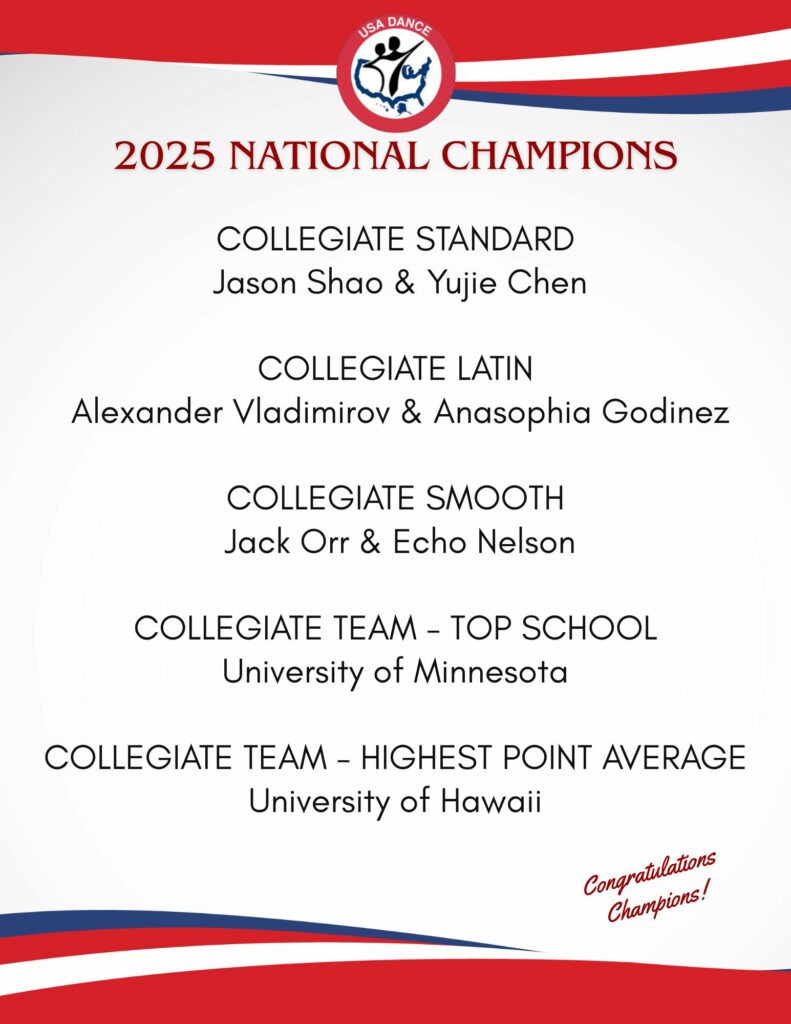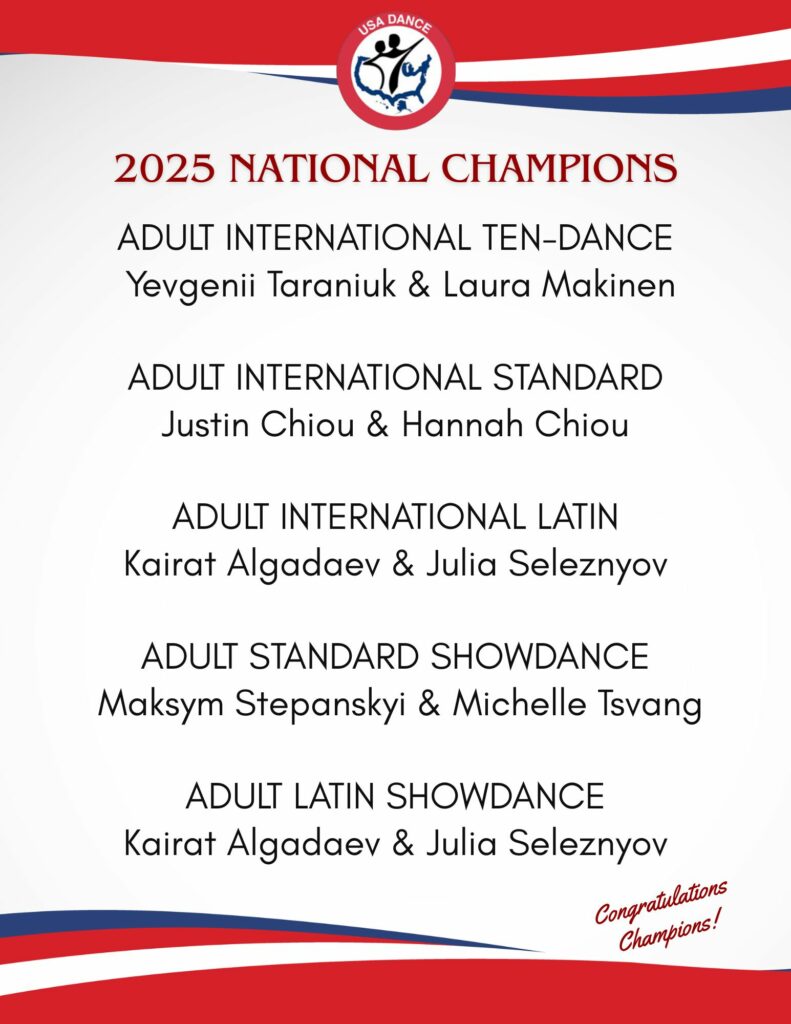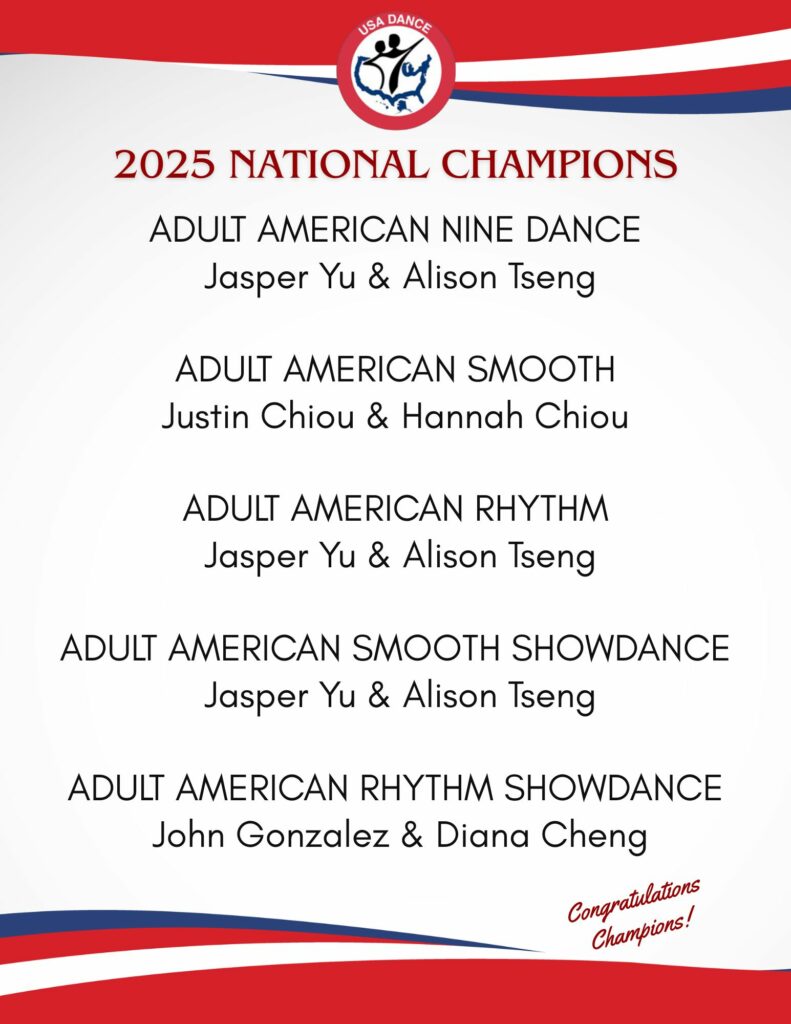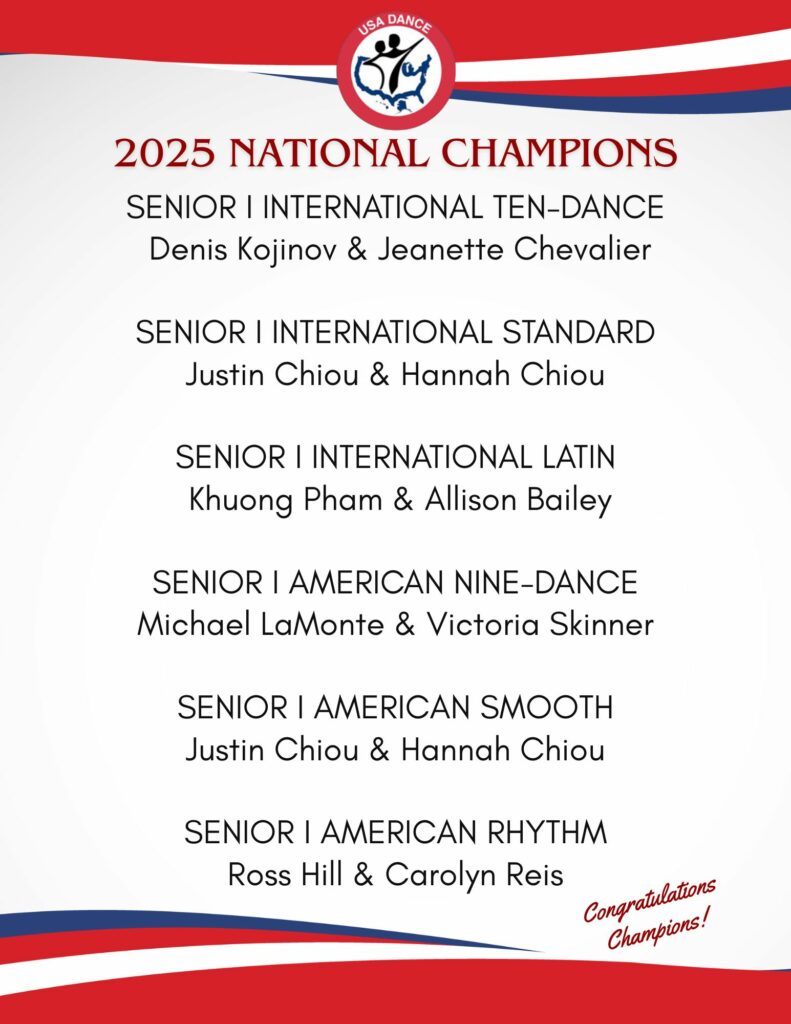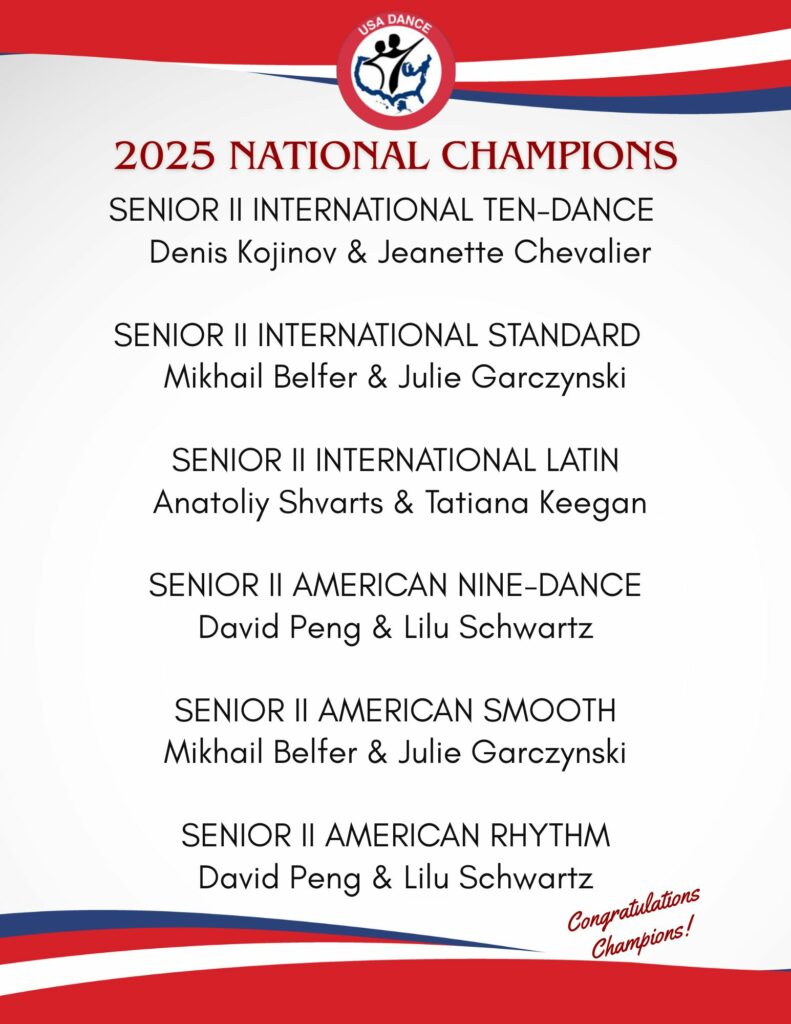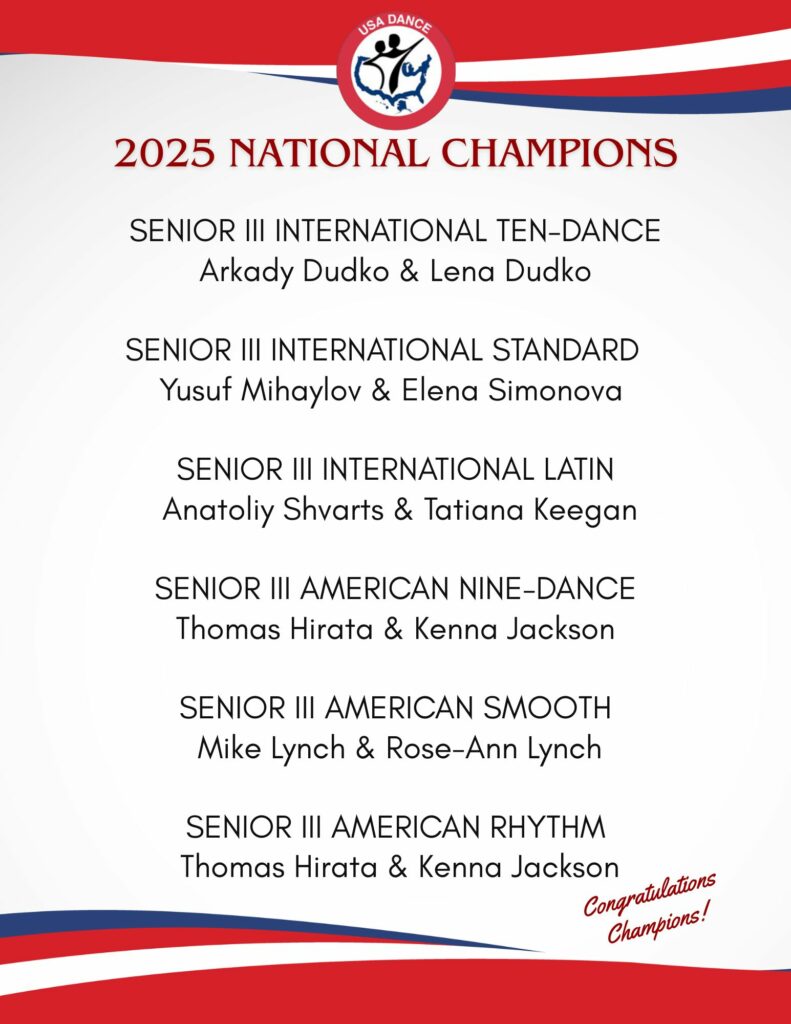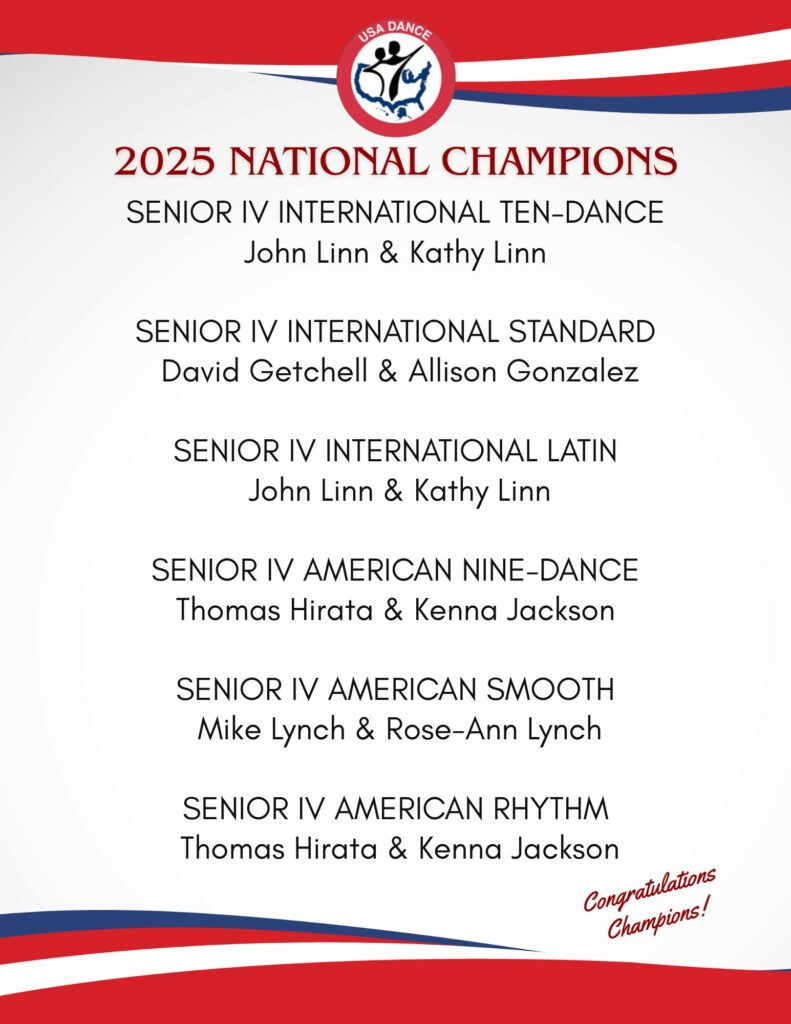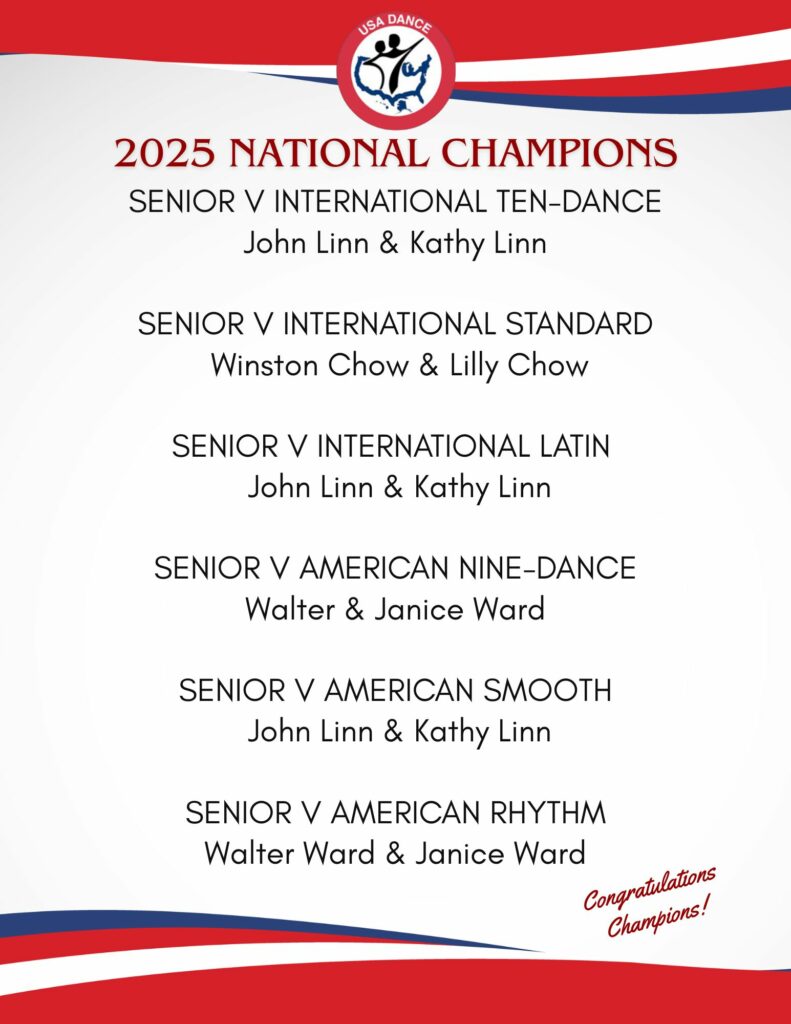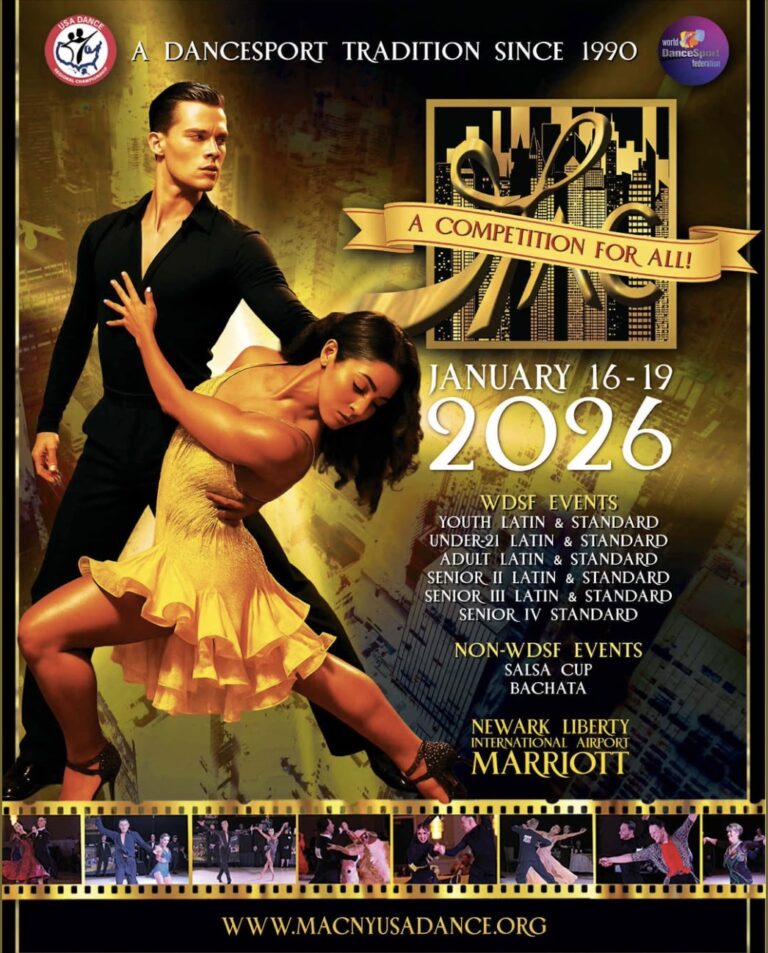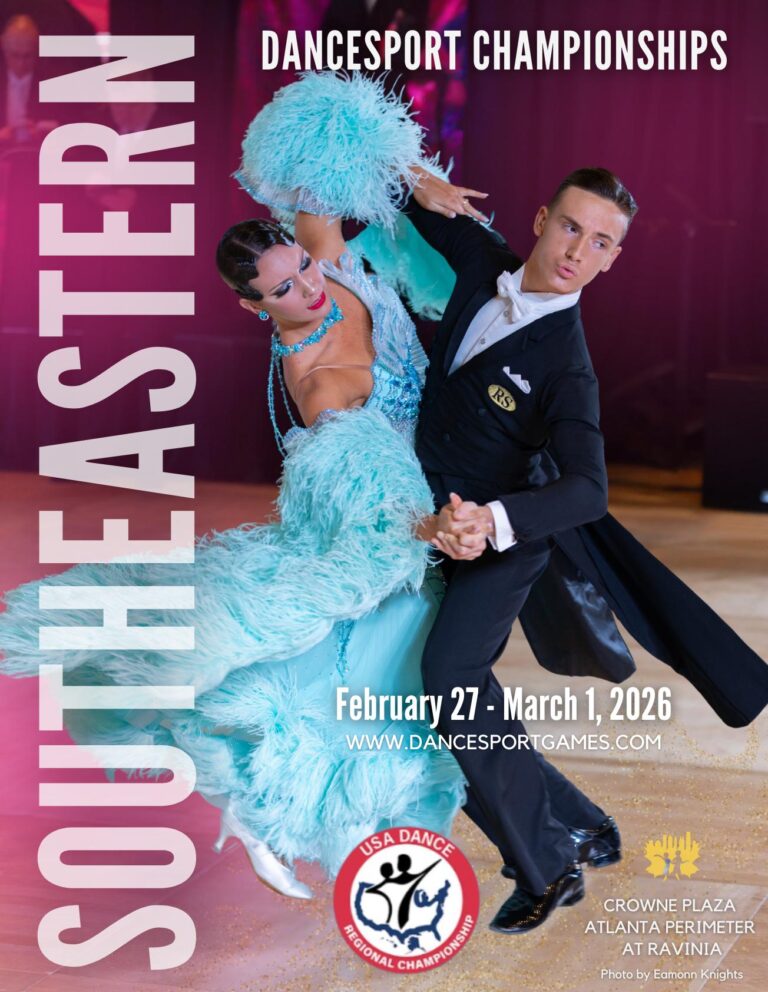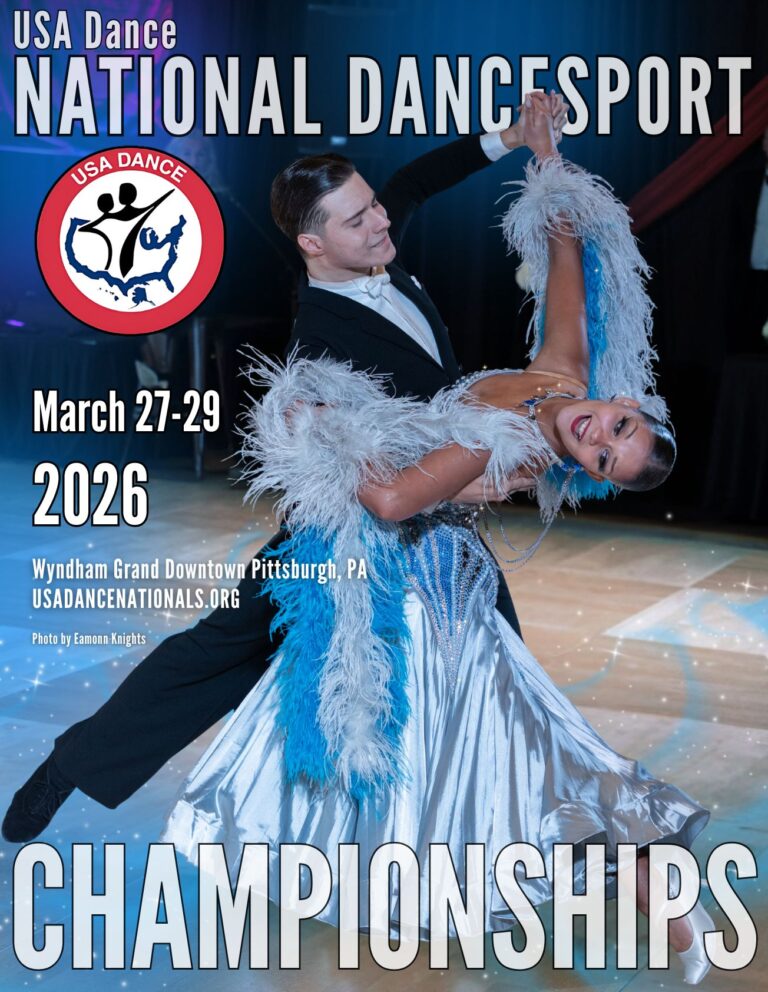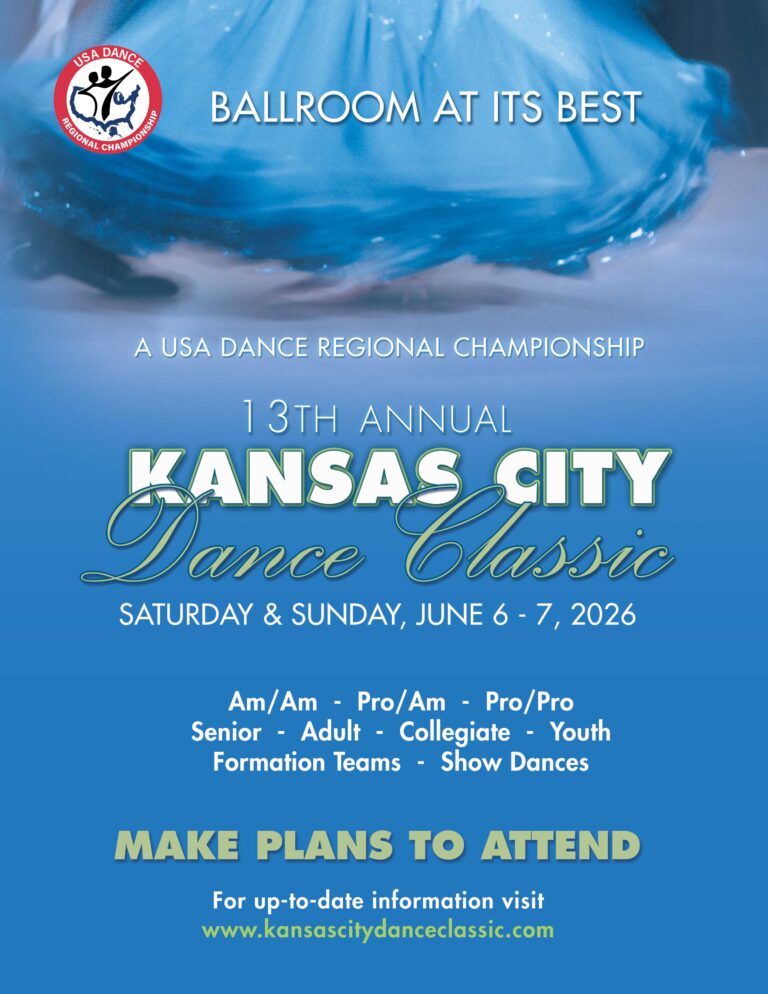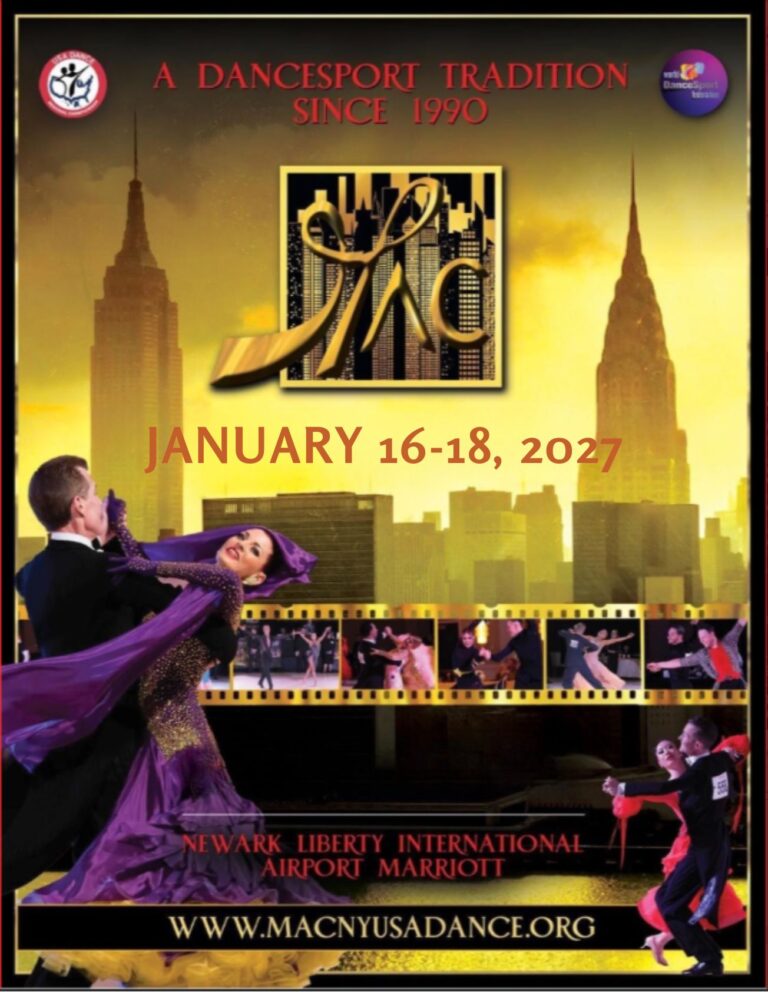Editor’s Note: The USA Dance Senior Committee raised concerns several times over the past five years regarding inadequate lighting at USA Dance Competitions. Concerns included depth perception, visibility, clarity, and balance of competitors, judges, and spectators.
WDSF Rules do not cover this issue. They state…
- WDSF Rule 8.1: All couples must perform in the same lighting condition in all rounds. All other lighting must be excluded except spotlights.
The NCAA, however, regulates indoor sports lighting to ensure optimal visibility for its athletes and spectators. Key aspects include illumination levels, uniformity, color temperature, color rendering, glare control, and flicker-free lighting.
American Dancer asked one of the World’s experts, Dr. Ming Wang, to address concerns about poor or mood lighting at ballroom competitions.
Dancing requires quick, precise movements, where one mistake can lead to a faulty move. The decision-making for these movements starts with the eyes and ends with the feet. This article will discuss the importance of optimal lighting for our peak performance.
In photography, the lighting can make or break a photo. Similarly, lighting is crucial for precise, clear vision and navigating our world. Much like a camera, the eye is composed of two lenses – the cornea and natural lens, an aperture – the iris/pupil, and a film – the retina.
The size of the eye’s pupil is what is controlled by different lighting conditions. The pupil size increases and decreases in size depending on the amount of light. In bright light the pupil size is smaller and in low light the pupil size is larger. When the pupil size increases in low light, the goal is to bring in as much as possible to be able to see, however this sacrifices visual clarity. This is why most people will state they see worse at night!
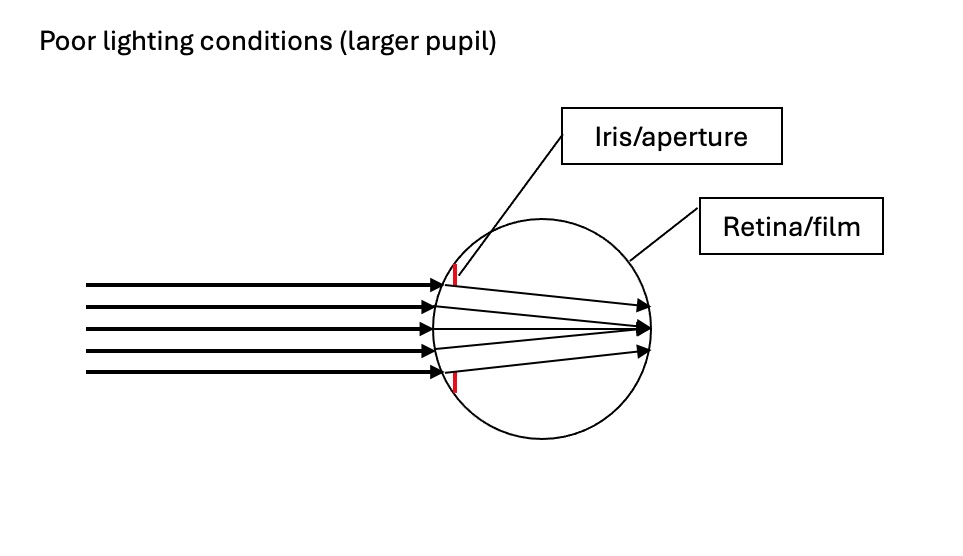
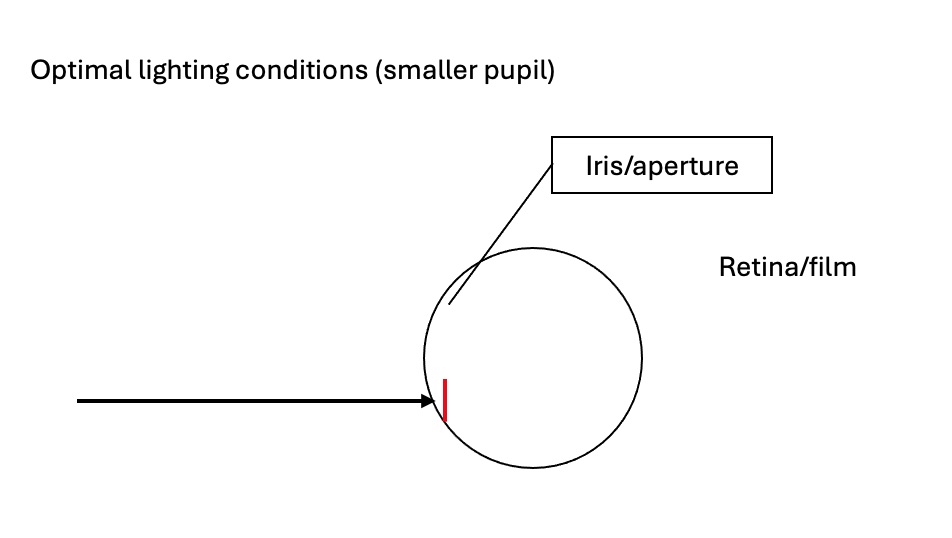 With a larger pupil (larger aperture) in poor lighting conditions, unfocused light is entering the eye. This causes decreased visual quality and difficulties with depth perception. Consequently, it can cause eye strain, balance issues, and an increase in visual glare. If a person has other underlying eye conditions, such as cataracts, this can exacerbate these conditions and cause a significant decrease in vision. Optimal lighting causes the pupil to be smaller, stopping defocused and unnecessary light from entering the eye. This improves image clarity, contrast, and depth perception.
With a larger pupil (larger aperture) in poor lighting conditions, unfocused light is entering the eye. This causes decreased visual quality and difficulties with depth perception. Consequently, it can cause eye strain, balance issues, and an increase in visual glare. If a person has other underlying eye conditions, such as cataracts, this can exacerbate these conditions and cause a significant decrease in vision. Optimal lighting causes the pupil to be smaller, stopping defocused and unnecessary light from entering the eye. This improves image clarity, contrast, and depth perception.
Proper lighting provides a safer environment for the ballroom competitors, allowing them to perform at their best, improving the ability of judges and staff to evaluate the competitors, and enhancing the experience of those spectating.
About the authors:
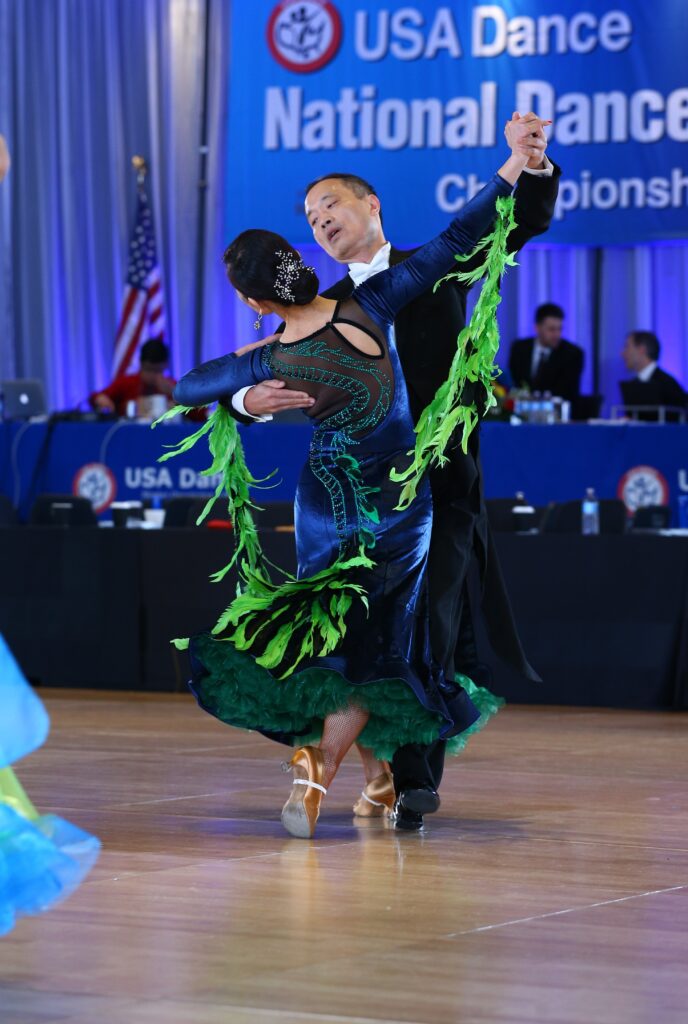
Dr. Ming Wang, Harvard and MIT (MD, magna cum laude) PhD, is an ophthalmologist and world-class cataract and LASIK eye surgeon at the Wang Vision Institute, located at 1801 West End Ave, Ste 1150, Nashville, TN 37203; 615-321-8881. Dr. Wang specializes in laser vision correction and has performed over 55,000 laser vision procedures, including those on more than 4,000 physicians.
Dr. Jake Wysiadlowski is an optometrist at Wang Vision Institute, who specializes in ocular disease with an emphasis on refractive surgery.
The 2024 film “Sight” (free link: sight.drmingwang.com), based on Dr. Wang’s autobiography “From Darkness to Sight”, tells the story of his work in establishing the Sight Foundation, which helps blind orphan children from around the world, and his invention of the amniotic membrane contact lens, which has benefited millions.
Read more about Dr. Wang and “Sight.”

